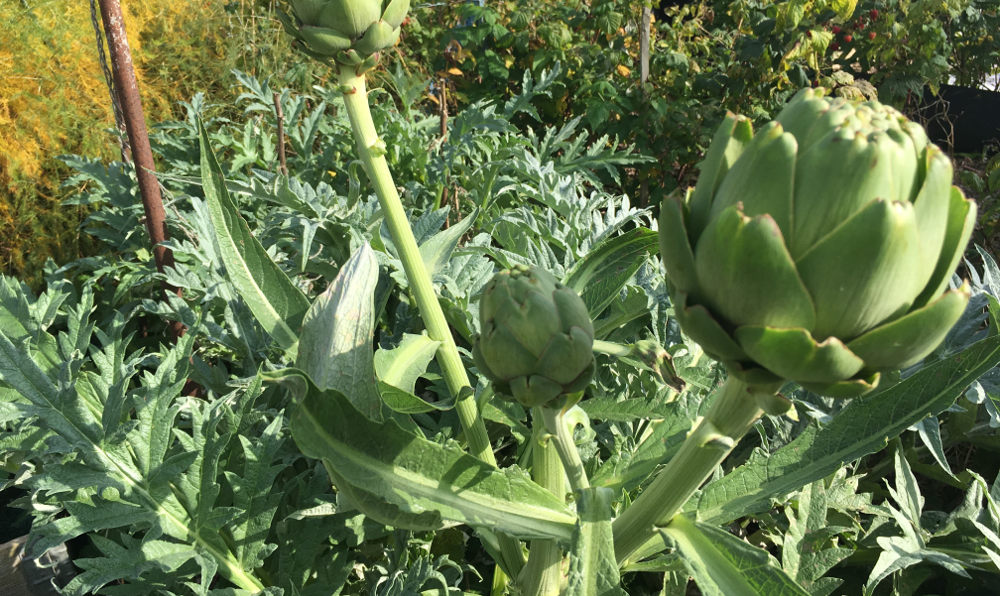
The vegan gardener
Matthew Appleby talks us through the first steps of vegan gardening
Vegan gardening is becoming a ‘thing’ as veganism increases in popularity and people seek to avoid using animal by-products in all parts of their lives, for health, ethical and environmental reasons.
Vegans believe animal farming is wasteful of land and resources, cruel to animals and the resulting meat, milk and eggs are bad for human health. It’s not everyone’s cup of green tea, but with increasing climate change and concern about diet and obesity, as well as animal welfare, the word ‘vegan’ is ubiquitous at the moment.
While vegans seek to remove animal-based foods from their diet, other aspects of making a lifestyle truly vegan may have been overlooked. Cutting out animal inputs in your garden, as well as growing the best products for a vegan diet and how to be a truly animal-friendly gardener are the subjects of my new book, Super Organic Gardener, Everything You Need to Know About a Vegan Garden (Pen & Sword January 31 £16.99). The idea of this book is to bridge the gap between vegan food and vegan lifestyle.
So, where do you start? Firstly, you can make your own fertiliser to replace blood, fish and bone products – the by-products of the slaughterhouse, which can also attract vermin to your plot. I make comfrey ‘tea’ by stewing the herb in a bucket of water, which I strain off to give plants a tonic. Comfrey contains high levels of potassium, nitrogen and phosphorus, which are the essential nutrients for plant growth. Seaweed is packed with nutrients and minerals. Commercial products such as Maxicrop are seaweed-based.
Making compost to replace animal manures is the other cornerstone of vegan gardening. Animal manures can contain harmful bacteria such as e-coli, and they are the by-products of the animal farming system, which vegans do not want to support.
Compost made from green and brown organic material and (vegetable) food waste make up your growing media. There are a few commercial mixes from companies such as Fertile Fibre now available too. But while there are still few commercial products on the market for vegan gardeners yet (unlike the number of products available in the vegan food or beauty sectors), interest is growing. Late in 2018, 15,000 people attended Vegfest at London Olympia and there was a full series of talks in the ‘permaculture’ section organised by the Vegan Organic Network.
The UK’s first vegan garden festival was held at Hampshire plant nursery Hortus Loci in autumn. Among speakers were Chelsea Flower Show designer Cleve West, who has an allotment in Hampton Wick that he gardens without animal inputs. Cleve has written the introduction to my book – we have something in common as my allotment in Wimbledon is also gardened ‘veganically’.
Dos and don’ts of a vegan gardener
What you can do:
- make your own compost from grass cuttings, leaves, garden clippings, food bin waste
- make your own fertiliser from comfrey stewed in a bucket of water.
- Use alternative plant tonics such as rock dust, ash, rotted woodchip and grow a green manure by sowing nitrogen-rich seeds on bare soil. Hoe it in when grown.
- Grow your own protein and iron-rich veg such as artichokes or broccoli to make sure your vegan diet is not lacking in any essential minerals and vitamins.
- Deter animals that might eat your crops by avoiding feeding birds, by growing banks of plants that predators live in and by being prepared to sacrifice some of your crops rather than blitzing anything wild on the plot. Netting, scents and scarers are all alternatives to killing ‘pests’.
What you can’t do:
- Use animal manures.
- Use blood, fish and bone fertilisers.
- Keep chickens or bees.
- Kill wildlife and insects, including slugs.
Super Organic Gardener, Everything You Need to Know About a Vegan Garden by Matthew Appleby (Pen & Sword January 31 £16.99).
Read more on ethical gardening.







